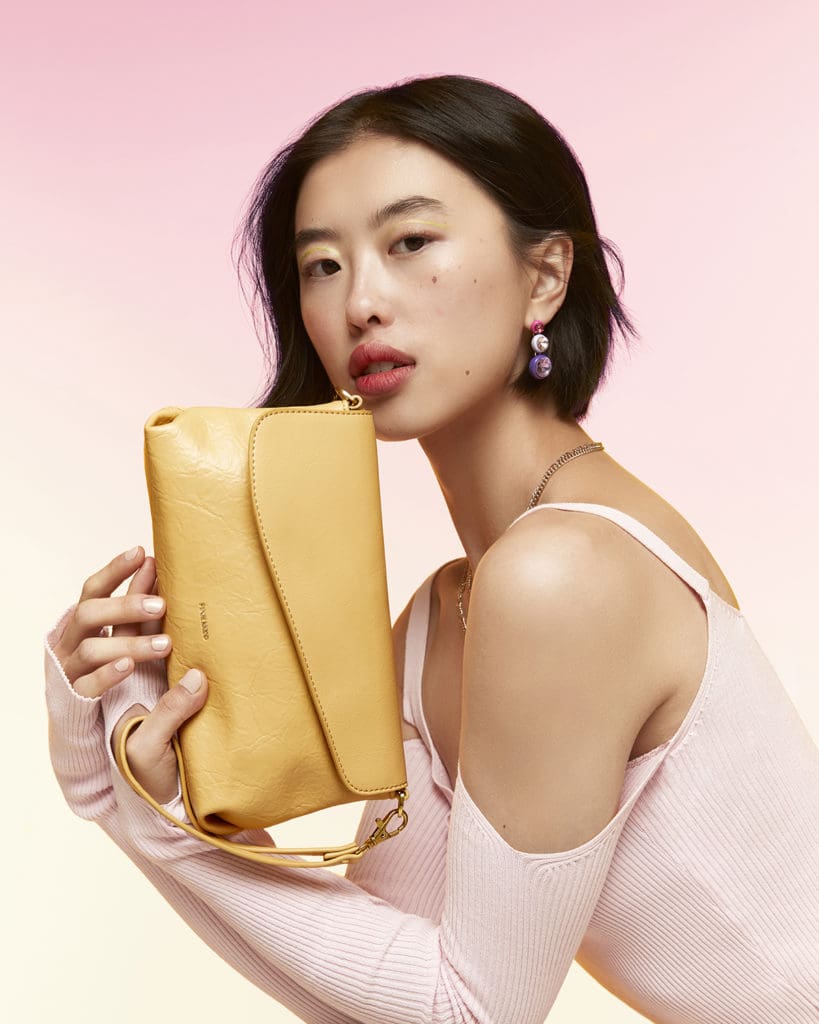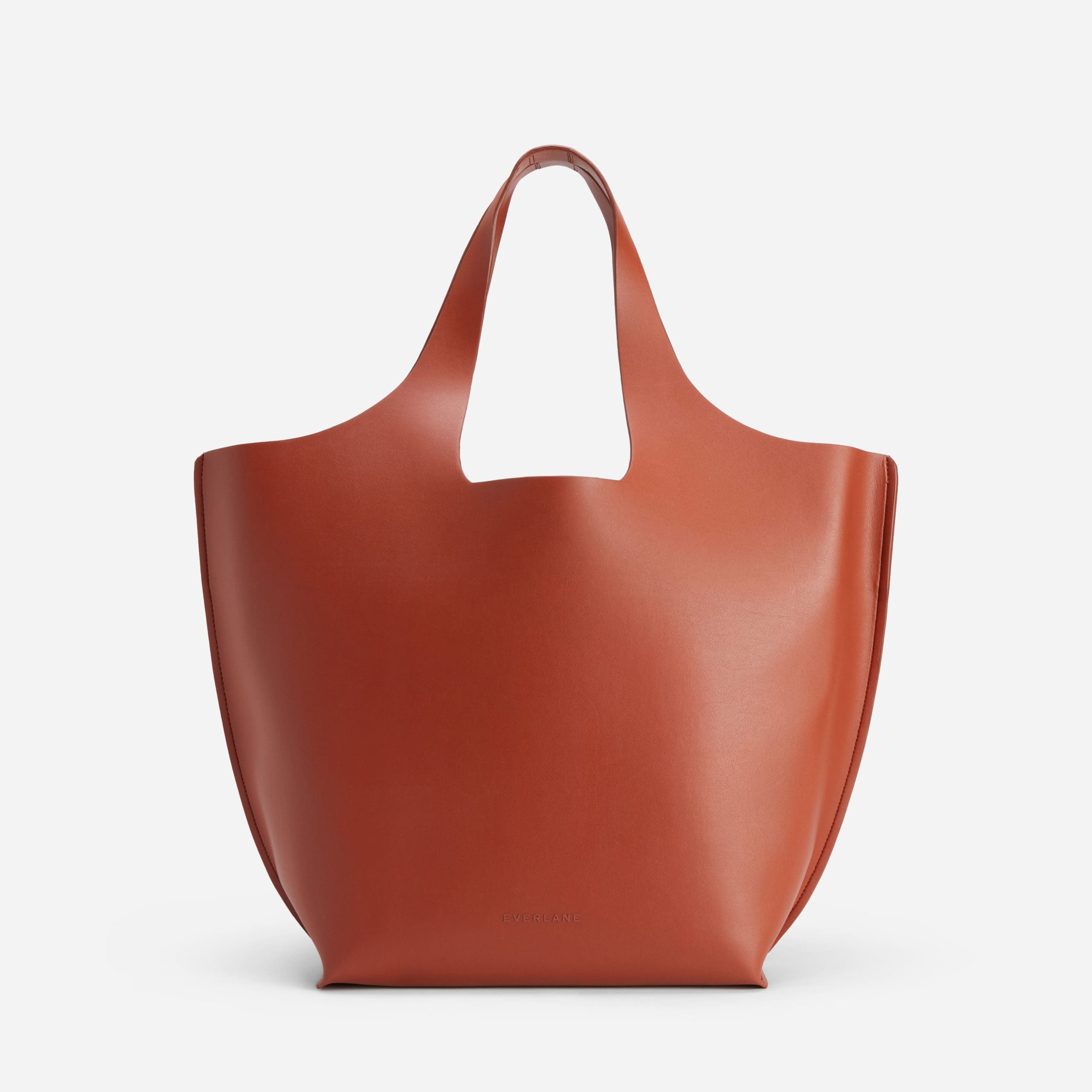Vegan leather sure has come a long way since the days when it was disparagingly called (ugh) pleather. Back then, most synthetic leather was made from PVC (polyvinyl chloride). This cheap, versatile polymer is used in everything from home furnishings to toys to hospital supplies. PVC is also extremely toxic for the environment.

Some cheaper brands still use PVC today. According to Silvia Gallo, founder of Jeane & Jax, bags made from the stuff feel stiff and hard; they crack and peel easily. Gallo uses PU (polyurethane) instead. It’s strong, durable, biodegradable, less harmful to the planet and, she says, “If you use a higher-quality PU, it’ll have grains that imitate leather, it’ll have some pores and it’s actually breathable. That was important to me because my mission was to show consumers that you can have a product that is quality-driven and looks just as good as leather.”
Lucky for eco-conscious consumers, Jeane & Jax is not the only forward-thinking brand embracing such alternatives to leather. Matt & Nat has always avoided animal-based materials in its bags and accessories; now the brand is trying out different types of PU, along with PVB (polyvinyl butyral) made from recycled windshield glass resin and materials constructed from fruit-skin fibres. Ditto for Pixie Mood, whose beautiful bags and small goods have been “vegan since the beginning.” Says co-founder and creative director Chloe Ho, “I strive to create thoughtful, intentional pieces that have the least impact on the planet, so that our customers can feel confident in every aspect of their style.” Both brands are available in Vancouver at Fine Finds Boutique.
On the runway, Stella McCartney has been “artificial” for two-plus decades. In 2018, the label introduced a bag made from Mylo—mushroom leather. Mylo is grown from mycelium, which is the underground root structure of mushrooms, and it has also been used in some Adidas shoes and Lululemon yoga mats. Last year, Elisa C-Rossow launched bags and accessories made from a material that mixes waste from the apple juice industry with PU. The Montreal designer had been searching for a material “as beautiful, as chic, as luxurious-looking as real leather.” She was stunned by how similar apple leather looks and feels to calfskin. “It’s unbelievable. It’s waterproof, as leather is. It has really extreme resistance, like leather.” C-Rossow felt it was important not to just replace one problem with another. She says, “If you decide to not kill animals for the skin, when you use plastic, it kills animals anyway.”

Also based in Montreal, Mélissa Lambert, president and founder of her namesake brand, feels similarly passionate about choosing materials that have the least-harmful impact. “Raising animals is one of the main sources of pollution and CO2 emissions,” she says. Lambert’s elegant handbags, backpacks and accessories are crafted from PU that looks and feels as luxe as crocodile leather, but has PETA certification, meaning that “no animal products are involved in any part of the creation of the product, even the glue.”
Everlane is another company embracing the vegan ethos. The label just launched a capsule of bags made from Desserto, an innovative soft-and-durable material sourced entirely from nopal (prickly pear) cactus. According to director of sustainability Katina Boutis, this hardy plant “is entirely rain-fed, requiring no irrigation water to grow, with a significantly lower carbon footprint compared to bovine leather. With Desserto cactus leather, we get a beautiful, high-quality, bio-based leather alternative with a much lower impact.”
Other brands are manufacturing plant-based leathers using grapes, pineapples, corn, cork, eucalyptus, sugarcane and other crop waste. But as with almost everything to do with reducing your environmental footprint, the competing considerations are confusing. Which is worse for the planet: vegan leathers with high plastic content or animal leathers tanned using harsh chemicals? How does the equation change when one fabric is sourced locally and the other comes from overseas? How many years can specific vegan leathers last?
The answers lie in the questions: do ask lots of them before investing in a vegan leather piece. Reputable brands will be able to give you clear, satisfying answers. And don’t be afraid to take your business elsewhere. It may not seem like much—the purchase of just one handbag or backpack—but, ultimately, it all matters. When it comes to the environment, Gallo says, “If we can all do something small, it adds up to be something big.” —Sheri Radford

May 11th, 2022 at 6:51 am
Where is the black tote in the picture above from?